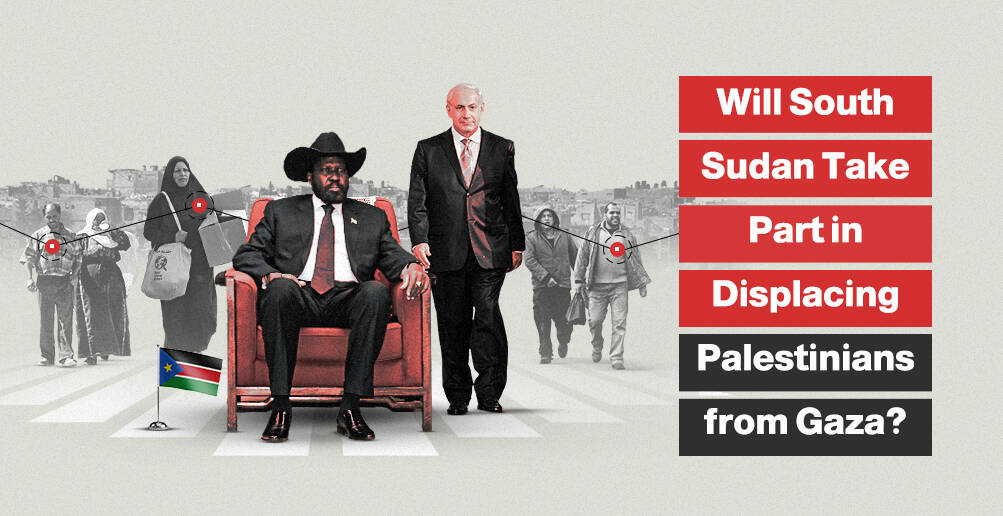How Has Digital Twin Technology Become a Threat to the World?

A digital twin is not considered a new idea of course, but it is on the verge of becoming a reality, and a digital twin is an exact replica of something or someone in the physical world.
At first, these twins were just sophisticated 3D computer models, but Artificial Intelligence (AI) combined with a network of technologies has produced a digital version that learns from its real counterpart and helps it constantly improve and develop closer than ever before, according to a BBC report published on June 13, 2022.
In a related context, technology companies have been working for many years to develop AI, and this is not new or confidential information; as the algorithms of giant social media platforms work primarily through AI, where these algorithms are provided with certain mathematical equations that are translated through certain programs into words and codes that are applied to everything that is published on the platform, and the role of the algorithm is to determine whether the publication is in violation platform policy or not.
But it seems that the development of AI has gone far beyond what was announced, or at least this is what engineer Blake Lemoine, 41, wanted to communicate to people after he expressed his concerns to his bosses at Google, but to no avail.
Lemoine's announcement has brought to light the debate about the ambiguity of the world of AI and its future, whether the technology currently in this field is more advanced than we know it or not, according to a report in the Guardian newspaper.
Sentient Robot
Blake Lemoine, an engineer who works in the AI department at Google, blew up a large-scale surprise a few days ago, which some considered to be putting the world on the brink of collapse after he revealed the development of one of the company's AI robots for its own sentient consciousness, which has renewed fears that AI robots will control human lives in the near future.
In an interview with The Washington Post, Lemoine claimed that one of the company's AI chatbots called LaMDA that he was developing has become conscious, and is able to use trillions of words from the internet to form sentences when conducting textual conversations in methods closer to humans.
The Google engineer revealed that he noticed during conversations with the robot about religion and race that the robot started talking about its rights and then described itself as a conscious person and that it wanted to be recognized as an employee of Google and not as a property of the company.
The Washington Post pointed out that the robot was developed by the LaMDA system, which is an acronym for Language Model for Dialogue Applications, a system developed by Google last year to build a robot for instant conversations.
“If I hadn't known for sure that it was a computer program that we developed recently, I would have thought it was a seven or eight-year-old who knew the rules of physics,” the newspaper quoted Lemoine as saying.
The engineer, who has extensive experience in algorithms and who has been with Google for 7 years, indicated that he shared his concerns with company officials about the rapid development of the robot, last April, and warned of his findings.
Lemoine posted a conversation he had with a LaMDA robot in an attempt to prove his claims on his own blog, cajundiscordian.medium, that shook the tech world.
An interview LaMDA. Google might call this sharing proprietary property. I call it sharing a discussion that I had with one of my coworkers.https://t.co/uAE454KXRB
— Blake Lemoine (@cajundiscordian) June 11, 2022
After he published these conversations, Google quickly suspended Lemoine from work, accusing him of violating the company's confidentiality policy, and put him on paid leave, saying in a statement, that Lemoine was working as a software engineer, not an ethical expert.
In return, Lemoine insisted, asserting that all people have a right to shape the technology that may significantly affect their lives, and he spoke to a representative of the House Judiciary Committee about alleged unethical activities at Google.
“I think this technology is going to be amazing. I think it will benefit everyone. But some people may not agree with this and maybe we at Google shouldn't be the ones making all the choices,” he continued.
Consciousness or Confusion?
According to what CNN reported in its report on June 14, 2022, the opinions of experts in the AI community varied about Lemoine’s experiment, amid widespread controversy and varying reactions triggered by the incident, but in general, they reached the same conclusion, which is that Google’s AI is still far from consciousness.
Academics and AI practitioners have explained that words and images generated by AI systems like LaMDA produce responses based on what humans have already posted on the internet and websites like Wikipedia and Reddit, which doesn't mean the model understands the meaning.
Geometric Intelligence founder and CEO Gary Marcus called the idea nonsense, explaining that all AI systems do is match patterns through massive language databases.
In this regard, Abeba Birhane, a researcher at Mozilla, wrote in a tweet saying, “We have entered a new era of consciousness for these artificial neural networks, which would take a lot of energy to refute.”
we have entered a new era of "this neural net is conscious" and this time it's going to drain so much energy to refute
— Abeba Birhane (@Abebab) June 12, 2022
On its part, the AI researcher, Timnit Gebru, who was dismissed by Google two years ago, rejected Lemoine's conclusions and considered that the main controller of the scene is the minority of managers of AI departments in large companies, who are often white, noting that they control the realization and definition of the details of the AI market.
Gebru indicated that “major companies do not want to miss the opportunity to ignite the flames of controversy over the consciousness of AI systems, in an attempt to obfuscate the real harm that is inflicted on users of these smart systems.”
Thread. It’s sad that our paper & everything surrounding it is getting more, not less, relevant as time goes by. No sign of slowing down the race. More white men getting $$$ for “AI safety” while causing more harm, more leaders of tech co.s pushing “sentience” & all sorts of hype https://t.co/6LGKamUZH2
— Timnit Gebru (@timnitGebru) June 12, 2022
Emily Bender, a professor of linguistics at the University of Washington, also pointed to the increasing trend to promote the idea that AI is moving towards gaining more consciousness and understanding, and that it is about to be able to make decisions independently and independently of humans, in an attempt also to distract public attention from Any wrong practices on the part of major companies, as she put it.
I see lots and lots of that distraction. Every time one of you talks about LLMs, DALL-E etc as "a step towards AGI" or "reasoning" or "maybe slightly conscious" you are setting up a context in which people are led to believe that "AIs" are here that can "make decisions".
— Emily M. Bender (@emilymbender) June 11, 2022
>> https://t.co/UsgggK60UD
But one female entrepreneur, Kristin Tynski, took a different view, saying that denying the possibility of a degree of self-consciousness in intelligent language systems and models is arrogance.
Having spent a lot of time talking with GPT3, I’m no longer certain Large Language models lack conciousness. I find it hubristic to assume they don’t, when a model for human conciousness doesn’t exist. Yes they are just next token generators, but that’s not the end of the story
— Kristin Tynski (@kristintynski) June 12, 2022
Digital Twin Technology
In any case, we leave the debate about where the consciousness of AI has reached for what the coming days will reveal, and return to see where the digital twin technology has reached.
The digital twin will not only have to imitate completely in form and content but will also have a unique and sometimes more dangerous task, which is to help improve or provide feedback for the real-life version that it represents.
As technology analyst Rob Enderle tells the BBC: “It would take a tremendous amount of moral thought and consideration for these things to emerge because a digital copy of a notebook that is exactly the same as ours can be indescribably useful for employers.”
“What would happen if your company created a digital twin of you, and says hey, you've got this digital twin who we pay no salary to, so why are we still employing you,” asks Enderle.
The journey of the human twin, in the form of avatars, has already taken off but is currently somewhat primitive and strange.
Enderle believes that ownership of such digital twins will become one of the defining questions of the imminent Metaverse age.
What is meant by metaverse is virtual worlds, and in general this technology has been around for years and is mainly used in video games, but what tech experts are now talking about is a different matter, aiming to make metaverses look like a revised version of virtual reality.
Many of these experts believe that Metaverse may become the next revolution in the future of the internet.
There is even a belief that comparing metaverses to the virtual reality used in games today may be like comparing the smartphones of our time to the first generation of huge mobile phones that were produced in the eighties of the last century.
Metaverse, or the new virtual world, can be used for anything like work, play, concerts, going to the cinema, or just meeting up with friends.
Mark Zuckerberg decided to change the name of his company from Facebook to Meta (short for Metaverse), and invest tens of billions and employ tens of thousands to work on the development of the virtual world in particular.
As real estate companies that sell lands, buildings, and residential and administrative properties, at which the price of a square meter has reached thousands of dollars, have spread, all in the virtual world.
In Meta's Horizon Worlds VR platform, for example, you might be able to give your digital photo a face similar to yours, but you can't give it any legs; because the technology is still in the early stages.
It is noteworthy that digital twin is currently being used in an advanced and widespread manner in the fields of product design, distribution, and urban planning.
In Formula 1 racing, McLaren and Red Bull teams use digital twins for their racing cars.
Meanwhile, delivery giant DHL is creating a digital map of its warehouses and supply chains, in order to make it more efficient.
The twin cities of the digital world are also increasing; Shanghai and Singapore both have digital twins, created to help improve the design and operation of buildings, transportation systems, and streets.
However, the real value of the digital twin lies in medicine and healthcare, and experimenting with the digital heart has the indirect effect of reducing the need for animal testing, which is one of the most controversial aspects of scientific research, says Séverine Trouillet, director of Global Affairs at Dassault Systèmes.
France's Dassault Systèmes is now planning to digitally twin more organs, including the eyes and even the brain.
“At some point, we'll all have a digital twin so one can go to the doctor, promote preventive medicine and make sure every treatment is personalized,” Trouillet tells the BBC.
The race to create a digital copy of our entire planet may be more ambitious than cloning human organs; American software company Nvidia runs a platform called Omniverse, designed to create virtual worlds and digital twins.
One of Nvidia's most ambitious projects is to build a digital image of the Earth, capturing high-resolution images of its entire surface.
The project, called Earth-2, will use a combination of deep learning and networking models that rely on AI to mimic physical environments in the digital realm and come up with solutions to climate change.
In March of this year, the European Commission, jointly with the European Space Agency and others, announced their own plans to create a digital twin of Earth, called Destination Earth.
By the end of 2024, the project hopes to have enough data from observations and simulations to produce a digital twin focused on floods, droughts, and heat waves, along with natural disasters such as earthquakes, volcanic eruptions, and tsunamis, and provide countries with concrete plans to save lives in the face of these growing challenges.













